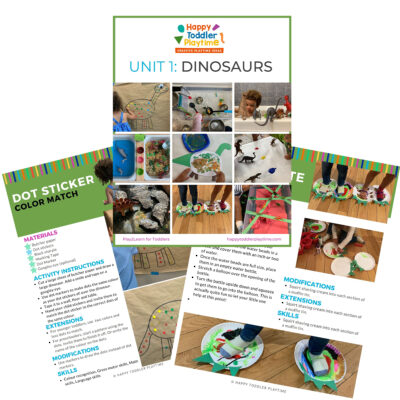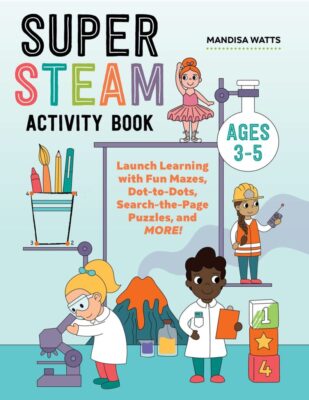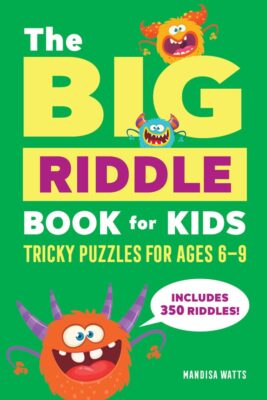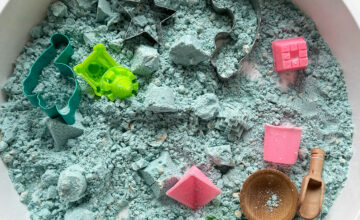A solar eclipse is like a cosmic game of hide and seek, where the Moon sneaks in front of the Sun, covering it up for a short while. It’s an amazing sight and a wonderful opportunity for kids to learn about the wonders of our universe. Imagine the Sun as a bright light bulb and the Moon as a small disk that slowly moves to block that light, casting a shadow on Earth. This extraordinary event doesn’t happen very often, so when it does, it’s a special occasion to explore and learn about the dance between our planet, the Sun, and the Moon.

What is the Solar Eclipse
Imagine the Sun is a big, bright flashlight shining down on us, and the Moon is a small, round shadow-maker that moves around the Earth. Sometimes, the Moon dances between the Earth and the Sun, blocking the Sun’s light from reaching us. This dance is called a solar eclipse. It’s like the Moon is playing peek-a-boo with the Sun!
Safety Precautions
Before diving into the exciting activities to celebrate and learn from a solar eclipse, it’s crucial to talk about how to watch it safely. Looking directly at the Sun, even when it’s partly covered by the Moon, can hurt your eyes really badly. But don’t worry! There are safe ways to watch, like using special eclipse glasses that protect your eyes or watching the shadow through a pinhole projector. Remember, regular sunglasses won’t protect you during an eclipse, nor can you view it through your phone or camera screen, so make sure to use the right gear to enjoy this spectacular event safely.
Solar Eclipse Activities for Kids
1. Create a Pinhole Projector
A pinhole projector is a simple way to watch the eclipse without looking directly at the Sun. Take a piece of cardboard and make a small hole in the middle with a pin. During the eclipse, let the sunlight pass through this hole onto a flat surface or another piece of paper. You’ll see the shape of the eclipse projected safely. Here’s how you can make one with things you probably have at home:
What You’ll Need:
- 2 pieces of white cardstock or thick paper
- A pin or a thumbtack
- Aluminum foil
- Tape
- A paperclip or a needle
Instructions:
- Prepare the Cardstock: Take one piece of cardstock and make a small, neat hole in the middle using a pin or thumbtack. This will be your pinhole.
- Cover with Foil: Cut a small square of aluminum foil, just big enough to cover the hole you just made. Tape the foil securely over the hole on the cardstock.
- Make the Pinhole: Carefully use a paperclip or needle to poke a tiny, clean hole in the center of the foil. This is what you’ll look through, so try to keep the hole as round and smooth as possible.
- Create Your Viewing Screen: Take the second piece of cardstock. This will act as a screen where you’ll see the image of the Sun projected through your pinhole.
- How to Use Your Pinhole Projector: To use your projector during the solar eclipse, stand with your back towards the Sun. Hold the cardstock with the foil and pinhole up towards the Sun, but don’t look at the Sun directly. Hold the second piece of cardstock in front of you, and adjust the distance between the two pieces until you see a small projection of the eclipsed Sun on your screen cardstock. Move and tilt the pinhole cardstock until you get a clear image.
Remember, the image of the Sun will be small and might look a bit fuzzy around the edges, but you’ll be able to see the shape of the Sun and Moon as the eclipse happens!
Tips for Success:
- Make sure your pinhole is as round and smooth as possible for the clearest image.
- If it’s a bit windy, you can tape the screen cardstock to a wall, window, or something that will keep it steady.
- Practice using your pinhole projector before the eclipse so you can find the best way to hold it and watch the eclipse safely.
Using a pinhole projector is a great way to experience the magic of a solar eclipse without risking damage to your eyes. Plus, it’s a neat science experiment to do with friends and family!
2. Eclipse Art with Chalk
Grab some black paper and chalk and draw what you imagine an eclipse looks like. Use different colors to represent the Sun, Moon, and Earth. This activity allows kids to express their creativity while reinforcing what they’ve learned about eclipses.
3. Shadow Play
During the eclipse, go outside (only if your child understands they can’t look up) or else try this in your basement or a room without windows with some fun shapes or toys and watch how the shadows change. This is a great way to observe the effects of an eclipse on sunlight without looking directly at the Sun.
4. Eclipse Journal
Encourage kids to keep an eclipse journal. They can write down what they see, how the light changes, and how the temperature and nature around them respond to the eclipse. This is a great way for them to record their observations and feelings about the event.
5. Solar System Model
Create a simple model of the solar system using balls of different sizes to represent the Sun, Moon, and Earth. Show how the eclipse happens by moving the “Moon” in front of the “Sun.” This hands-on activity helps kids understand the positions of these celestial bodies during an eclipse.

6. Safe Solar Viewing Glasses Decoration
If you have safe solar viewing glasses, let the kids decorate them with stickers or markers (on the non-viewing surfaces, of course). It makes the experience more fun and personalized.
7. Eclipse Shadow Drawings
Place a large sheet of paper on the ground and have kids stand on it inside and place a light directly above. If your child safely not look at the sun during the eclipse you can do this activity outside. Trace their shadows at different stages of the eclipse to see how shadows change. It’s a creative way to document the event.

8. Make an Eclipse Booklet
Fold several sheets of paper in half to create a booklet, where kids can draw pictures of the eclipse, write facts they’ve learned, and document their eclipse experience. It’s a great keepsake!

9. Phases of the Moon Calendar
Leading up to the eclipse, track the phases of the Moon with a homemade calendar. This activity helps kids understand the lunar cycle and its role in creating a solar eclipse.
10. Sundial Creation
Use a plate, some clay, and a straw to make a simple sundial. Mark the shadow’s position on the plate at different times to see how the Sun’s position in the sky changes throughout the day, especially during the eclipse.

11. Eclipse Simulation with Flashlights
In a dark room, use a flashlight to represent the Sun and a small ball for the Moon. Have one child hold the “Sun” while another moves the “Moon” to block the light. This simple activity demonstrates how an eclipse occurs.
12. Eclipse Time Capsule
Create a time capsule with drawings, predictions for the next eclipse, and personal notes about what they learned. Decide on a future date to open it, maybe the day of the next solar eclipse!
Engaging in these activities not only enriches the solar eclipse experience but also sparks curiosity and a love for learning about our universe. Remember, safety first! Enjoy the eclipse with the proper precautions and a sense of wonder for the incredible world above us.
Play2Learn Toddler & Preschool Programs for Curious Toddlers

There is no limit to your toddler’s energy and curiosity. That energy and curiosity although a joy can be challenging at times. Their interest in just about everything around them is what makes them great learners. One and two year olds can soak up so much just from their senses!
But as a teacher or parent that thirst for learning can be exhausting. That is why I created this toddler and preschooler program. To help you get the most out of this time with your curious toddler without having to come up with creative ways to play and interact with them.
Play2Learn for Toddlers includes 20 Units for toddlers. Each 2-week toddler unit has 20 super easy to set up and engaging activities for toddlers 18 months to 3 years.
Play2Learn Preschool which includes 20 Units for preschoolers. Each 2-week preschoolers unit has 20 unique and easy to set up and engaging activities for preschoolers 3 years to 5 years. That’s over 800 learning activities for your toddler and preschooler at your fingertips! So many ideas you and your child will never be bored again!
These toddler and preschool lesson plans and activities will definitely keep you and your toddler and preschooler busy playing and learning!
Click here for more information: Play2Learn
Book: Exciting Sensory Bins for Curious Kids

Did you know I wrote a book of sensory bins? Click here for more information Exciting Sensory Bin for Curious Kids. Or grab your copy at Amazon.
Boring afternoons are made exciting with awesome animal-based bins, like Salty Shark Bay or Yarn Farm. Pretend play bins like Birthday Cake Sensory Play or Bubble Tea Party encourage creativity and imagination. And your kids will have so much fun they won’t even know they’re getting smarter with STEAM (science, technology, engineering, art and math) activities like Sink or Float Soup, Magnetic Letter Hunt or Ice Cream Scoop and Count.
Designed for toddlers 18 months and up.
Book: Super STEAM Activity Book for Kids

Learning all about science, technology, engineering, art, and math sets kids up for scholastic success―and it can be so much fun! Watch kids enjoy building STEAM skills as they color friendly fish, help water find its way to tree roots, solve math problems with mazes, and more.
Find out more and grab your copy here.
Designed for preschoolers 3 years old and up.
Book: Big Book of Riddles for Kids

Riddle me this: What’s an exciting way to practice critical thinking while having a blast? The Big Riddle Book for Kids, of course! From hilarious puns to tough brain teasers, kids can build problem-solving skills with hundreds of riddles tha. t show them how to think outside the box.
- 350 riddles for kids—Have hours of fun with riddles, puns and jokes, and math and logic puzzles that’ll get their wheels turning!
- Level up their skills—Riddles get trickier as kids progress through the book, challenging them as they get better at solving puzzles!
- Double-check their work—Kids can check their answers in the back of the book with a handy answer key.
Help children expand their minds while having fun with this puzzle book for kids!
Designed for kids ages 6 years old and up.
TV Show: Curious Crafting
I’m so excited to share my crafting TV show Curious Crafting which launched in July 2022 on TVOkids and TVOkids YouTube! Season 2 aired in August 2023! My show was also nominated in 2023 for Best Live Action Preschool Series by the Youth Media Alliance Awards of Excellence.
Curious Crafting Season 1 is also now airing in Australia on ABC! Watch it here!
Set in the ultimate crafting space, Curious Crafting is a short form pre-school age series about the joy of making crafts. I lead a rotating cast of adorable little preschoolers (including my own) making magic out of common household objects.
In each episode we transform recycled items into magical crafts like a milk carton school bus, paper bag puppet or cotton pad turtle. The crafters learn and laugh their way through each activity while demonstrating what their young imaginations can create.
Curious Crafting shares the adventure and joy of making art with takeaway lessons for creating crafts at home.
This show designed for toddlers and preschoolers 2.5 years old and up.
Play2Learn Toddler & Preschool Programs for Curious Toddlers

There is no limit to your toddler’s energy and curiosity. That energy and curiosity although a joy can be challenging at times. Their interest in just about everything around them is what makes them great learners. One and two year olds can soak up so much just from their senses!
But as a teacher or parent that thirst for learning can be exhausting. That is why I created this toddler and preschooler program. To help you get the most out of this time with your curious toddler without having to come up with creative ways to play and interact with them.
Play2Learn for Toddlers includes 20 Units for toddlers. Each 2-week toddler unit has 20 super easy to set up and engaging activities for toddlers 18 months to 3 years.
Play2Learn Preschool which includes 20 Units for preschoolers. Each 2-week preschoolers unit has 20 unique and easy to set up and engaging activities for preschoolers 3 years to 5 years. That’s over 800 learning activities for your toddler and preschooler at your fingertips! So many ideas you and your child will never be bored again!
These toddler and preschool lesson plans and activities will definitely keep you and your toddler and preschooler busy playing and learning!
Click here for more information: Play2Learn
Book: Exciting Sensory Bins for Curious Kids

Did you know I wrote a book of sensory bins? Click here for more information Exciting Sensory Bin for Curious Kids. Or grab your copy at Amazon.
Boring afternoons are made exciting with awesome animal-based bins, like Salty Shark Bay or Yarn Farm. Pretend play bins like Birthday Cake Sensory Play or Bubble Tea Party encourage creativity and imagination. And your kids will have so much fun they won’t even know they’re getting smarter with STEAM (science, technology, engineering, art and math) activities like Sink or Float Soup, Magnetic Letter Hunt or Ice Cream Scoop and Count.
Designed for toddlers 18 months and up.
Book: Super STEAM Activity Book for Kids

Learning all about science, technology, engineering, art, and math sets kids up for scholastic success―and it can be so much fun! Watch kids enjoy building STEAM skills as they color friendly fish, help water find its way to tree roots, solve math problems with mazes, and more.
Find out more and grab your copy here.
Designed for preschoolers 3 years old and up.
Book: Big Book of Riddles for Kids

Riddle me this: What’s an exciting way to practice critical thinking while having a blast? The Big Riddle Book for Kids, of course! From hilarious puns to tough brain teasers, kids can build problem-solving skills with hundreds of riddles tha. t show them how to think outside the box.
- 350 riddles for kids—Have hours of fun with riddles, puns and jokes, and math and logic puzzles that’ll get their wheels turning!
- Level up their skills—Riddles get trickier as kids progress through the book, challenging them as they get better at solving puzzles!
- Double-check their work—Kids can check their answers in the back of the book with a handy answer key.
Help children expand their minds while having fun with this puzzle book for kids!
Designed for kids ages 6 years old and up.
TV Show: Curious Crafting
I’m so excited to share my crafting TV show Curious Crafting which launched in July 2022 on TVOkids and TVOkids YouTube! Season 2 aired in August 2023! My show was also nominated in 2023 for Best Live Action Preschool Series by the Youth Media Alliance Awards of Excellence.
Curious Crafting Season 1 is also now airing in Australia on ABC! Watch it here!
Set in the ultimate crafting space, Curious Crafting is a short form pre-school age series about the joy of making crafts. I lead a rotating cast of adorable little preschoolers (including my own) making magic out of common household objects.
In each episode we transform recycled items into magical crafts like a milk carton school bus, paper bag puppet or cotton pad turtle. The crafters learn and laugh their way through each activity while demonstrating what their young imaginations can create.
Curious Crafting shares the adventure and joy of making art with takeaway lessons for creating crafts at home.
This show designed for toddlers and preschoolers 2.5 years old and up.





